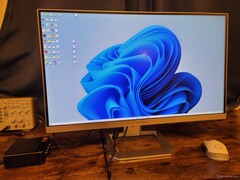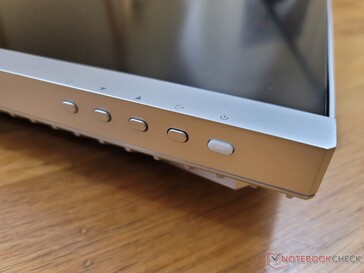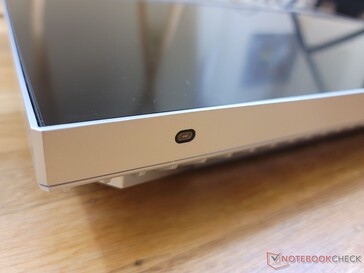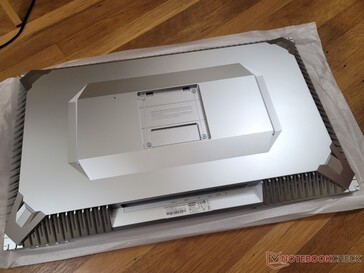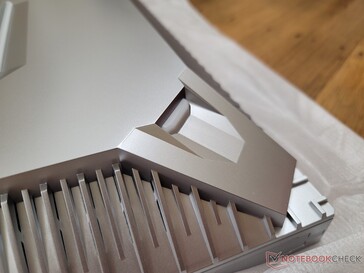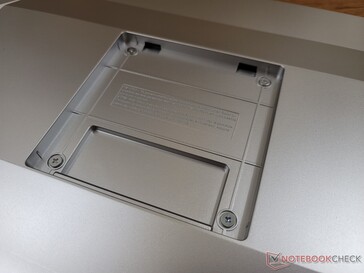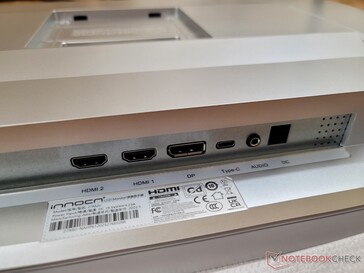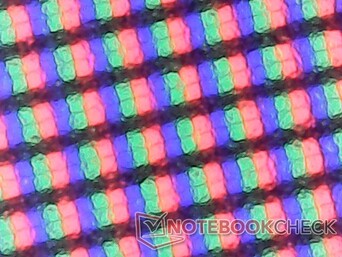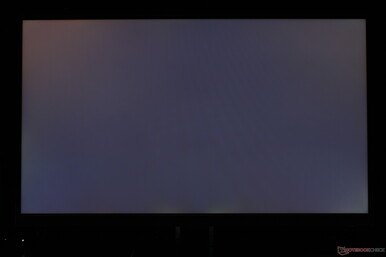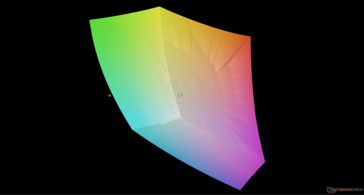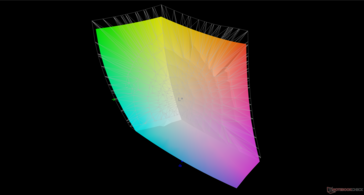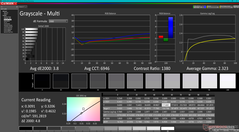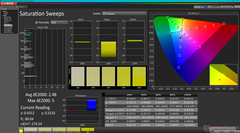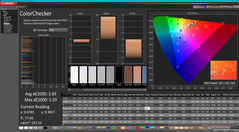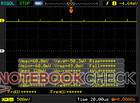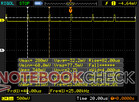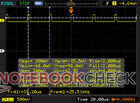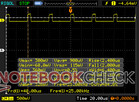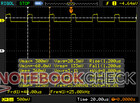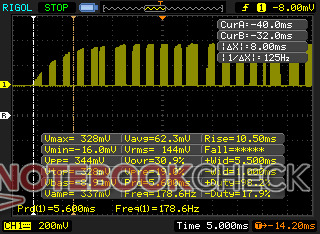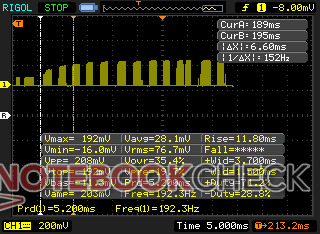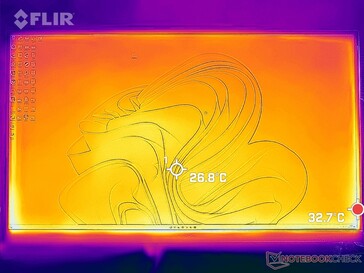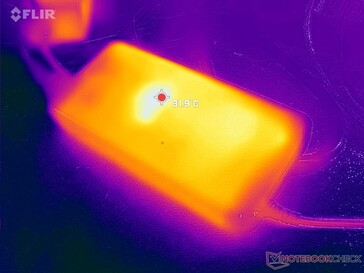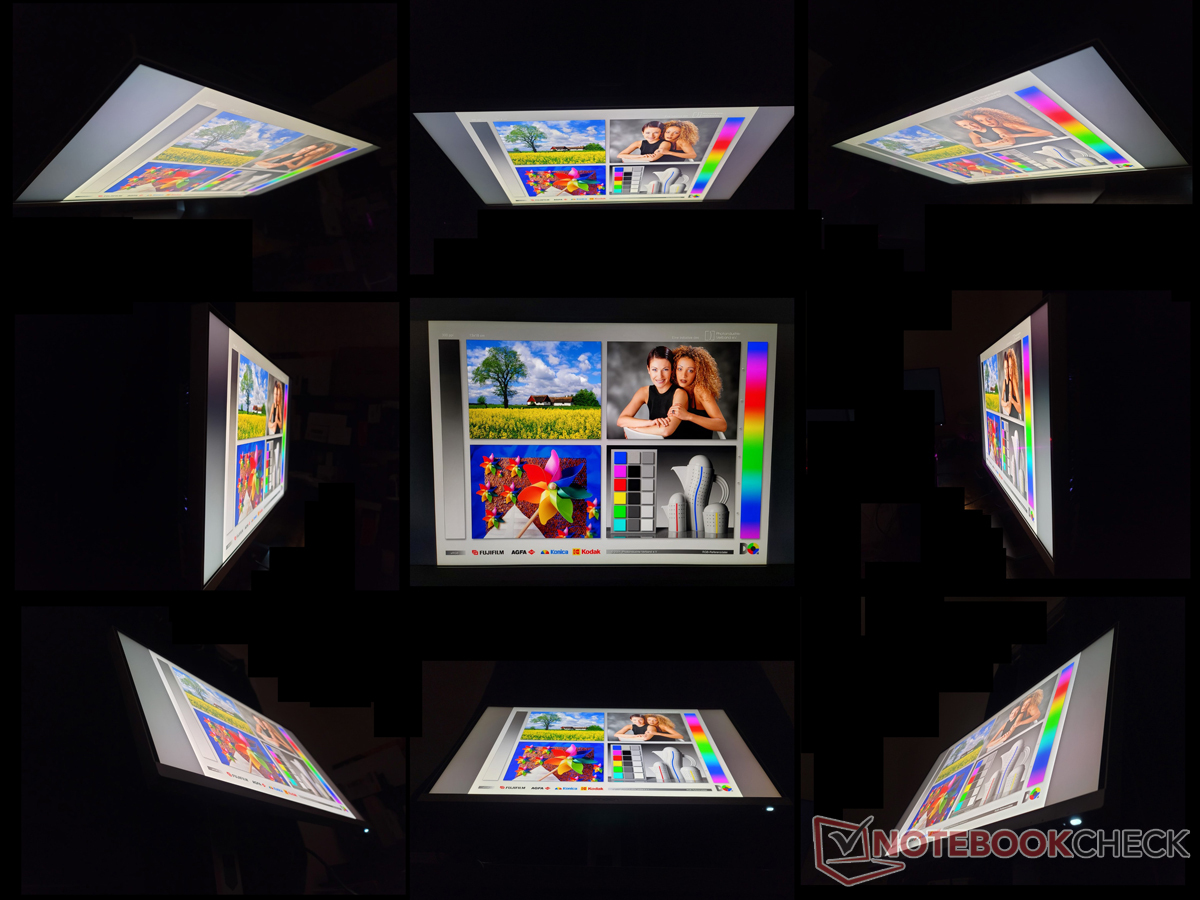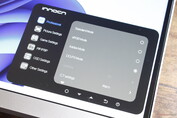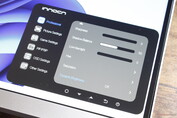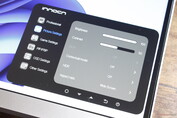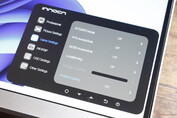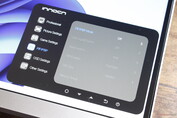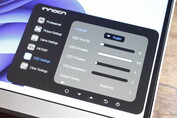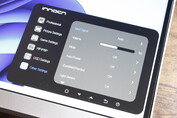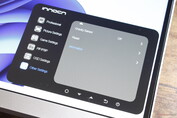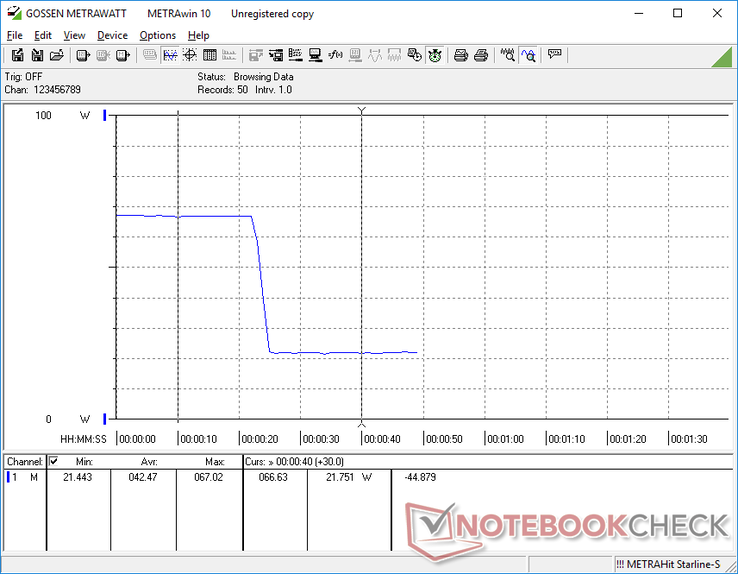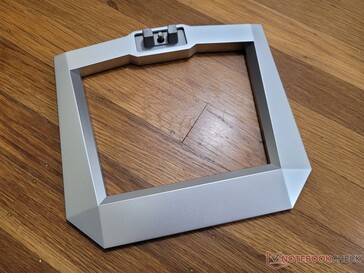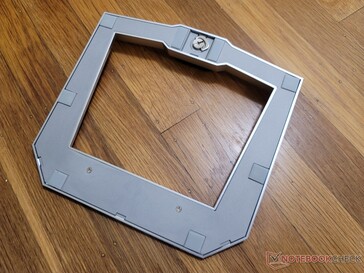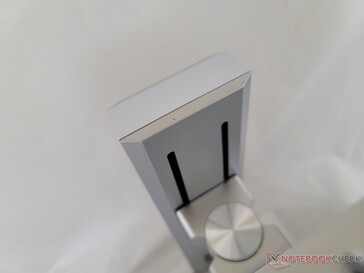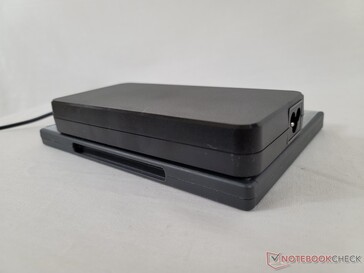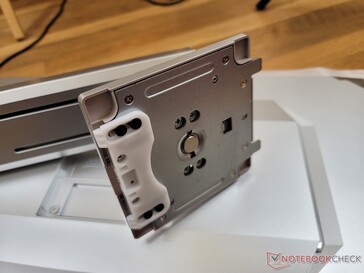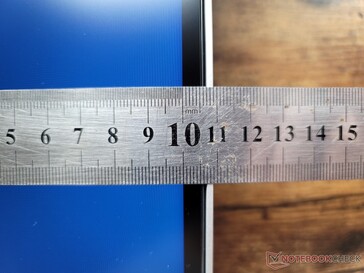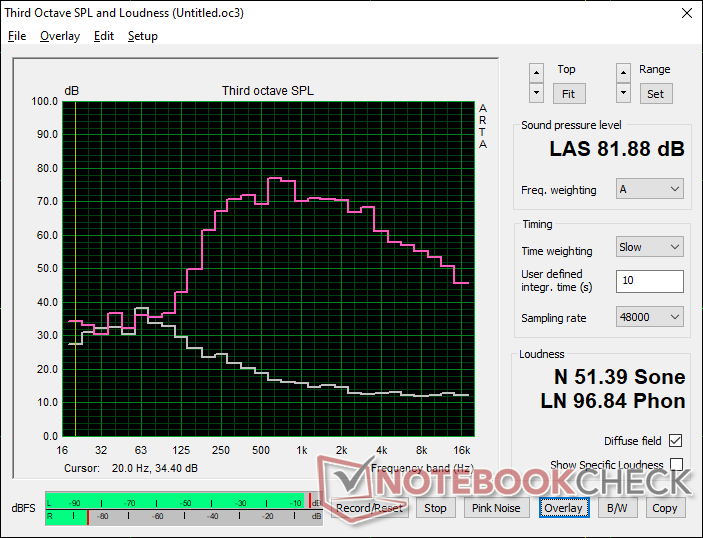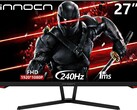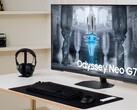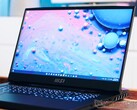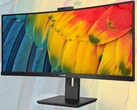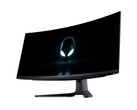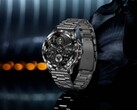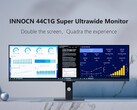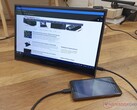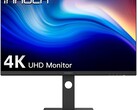When it comes to professional monitors, most users typically play it safe by going with tried-and-true brands like the Dell UltraSharp series or the Studio/Pro displays from Apple. Alternatives retailing for significantly less do exist, but they can oftentimes be a gamble in terms of features and color quality. The 27-inch Innocn 27M2U is one such model and the manufacturer has provided a sample for us for our honest impressions. We recommend checking out the Amazon product page here for the official specifications. All measurements below were performed on our unit in-house.
Before we get to the numbers, we should talk a bit about some unique features of the 27M2U. Unlike most other monitors, this one includes a gravity sensor or accelerometer for automatic screen rotation when the display is manually rotated. The feature is not as useful as it sounds, however, as you'll still have to manually set the screen orientation on Windows anyway. Thankfully, both the accelerometer and ambient light sensor can be disabled through the easy-to-use onscreen display.
| |||||||||||||||||||||||||
Brightness Distribution: 94 %
Contrast: 1220:1 (Black: 0.48 cd/m²)
ΔE Color 3.69 | 0.5-29.43 Ø5
ΔE Greyscale 3.8 | 0.57-98 Ø5.3
83.7% AdobeRGB 1998 (Argyll 2.2.0 3D)
99.8% sRGB (Argyll 2.2.0 3D)
88.6% Display P3 (Argyll 2.2.0 3D)
Gamma: 2.32
| Innocn 27M2U 27-inch monitor 3840x2160, 27.00 | Innocn 27C1U Monitor 3840x2160, 27.00 | Apple iMac 27 Mid 2020 APPAE32, IPS, 5120x2880, 27.00 | Apple iMac Pro APPAE1E, , 5120x2880, 27.00 | HP Z1 G2 G1X47EA HWP192F, IPS LED, 2560x1440, 27.00 | MSI Cubi 5 10M 2560x1440, 27.00 | Apple iMac Retina 5K 27 Late 2015 3.2 GHz M390 MK472D/A 5120x2880, 27.00 | |
|---|---|---|---|---|---|---|---|
| Display | 2% | 6% | 6% | -8% | -14% | 6% | |
| Display P3 Coverage | 88.6 | 82.6 -7% | 98.7 11% | 99 12% | 76.8 -13% | 72.1 -19% | 99.3 12% |
| sRGB Coverage | 99.8 | 99.7 0% | 100 0% | 100 0% | 99.7 0% | 95 -5% | 100 0% |
| AdobeRGB 1998 Coverage | 83.7 | 94.5 13% | 89.5 7% | 88.8 6% | 74.4 -11% | 69.5 -17% | 88.2 5% |
| Response Times | -74% | -31% | -82% | -141% | -20% | -80% | |
| Response Time Grey 50% / Grey 80% * | 13.2 ? | 30.8 ? -133% | 27.2 ? -106% | 30.4 ? -130% | 44.4 ? -236% | 20 ? -52% | 30.4 ? -130% |
| Response Time Black / White * | 16 ? | 18.4 ? -15% | 12.4 ? 22% | 18.8 ? -18% | 30.2 ? -89% | 14 ? 12% | 20.8 ? -30% |
| PWM Frequency | 25000 ? | 22730 ? -9% | 208.3 ? -99% | 200 ? -99% | |||
| Screen | -5% | 15% | -4% | -27% | -54% | -6% | |
| Brightness middle | 585.6 | 425.8 -27% | 529 -10% | 496 -15% | 365 -38% | 325 -45% | 429 -27% |
| Brightness | 595 | 395 -34% | 511 -14% | 468 -21% | 367 -38% | 293 -51% | 424 -29% |
| Brightness Distribution | 94 | 86 -9% | 88 -6% | 87 -7% | 87 -7% | 86 -9% | 95 1% |
| Black Level * | 0.48 | 0.46 4% | 0.48 -0% | 0.54 -13% | 0.4 17% | 0.28 42% | 0.58 -21% |
| Contrast | 1220 | 926 -24% | 1102 -10% | 919 -25% | 913 -25% | 1161 -5% | 740 -39% |
| Colorchecker dE 2000 * | 3.69 | 2.13 42% | 1.4 62% | 3 19% | 4.68 -27% | 6.87 -86% | 2.8 24% |
| Colorchecker dE 2000 max. * | 5.59 | 8.45 -51% | 2.6 53% | 5.8 -4% | 12.26 -119% | ||
| Greyscale dE 2000 * | 3.8 | 1.5 61% | 2.2 42% | 2.5 34% | 6.6 -74% | 9.68 -155% | 1.97 48% |
| Gamma | 2.32 95% | 2.28 96% | 2.32 95% | 2.22 99% | 2.34 94% | 2.25 98% | 2.13 103% |
| CCT | 6946 94% | 6620 98% | 6826 95% | 6824 95% | 6094 107% | 8329 78% | 6889 94% |
| Color Space (Percent of AdobeRGB 1998) | 80 | 79.4 | 66.26 | 69.51 | 79 | ||
| Color Space (Percent of sRGB) | 100 | 100 | 99.69 | 94.95 | 99.97 | ||
| Colorchecker dE 2000 calibrated * | 0.9 | 2.36 | |||||
| Total Average (Program / Settings) | -26% /
-14% | -3% /
3% | -27% /
-19% | -59% /
-49% | -29% /
-39% | -27% /
-16% |
* ... smaller is better
Innocn advertises a typical maximum brightness level of 600 nits or 1000 nits if HDR is enabled. Though we're able to confirm the 600 nits and 1000:1 contrast ratio with our own independent measurements, we're unable to reach the 1000-nit brightness level no matter the setting. Enabling HDR on both Windows and the monitor while running the official HDR brightness test would still result in a maximum brightness of only 600 nits. We've reached out to the manufacturer for any potential clarification and will update when appropriate.
Next, we wanted to test the colors of the monitor on the default DCI-P3 and Warm settings. Average grayscale and color DeltaE values would be 3.8 and 3.69, respectively, when under such settings. Changing the color temperature to Natural instead of Warm should bring these average down further to 2 or less as the panel comes pre-calibrated.
A key disadvantage of mini-LED is its use of pulse-width modulation (PWM) for brightness control. Instead of turning down the brightness of the diodes, they instead flicker very quickly for different lengths of time which our eyes then perceive as a dimmer screen. Our measurements show a flickering frequency of 25 kHz even when set to the maximum 600-nit brightness level. Most users won't notice the flickering, but a small subset of users with sensitive eyes may want to avoid using the Innocn for extended periods to avoid strain.
A feature that's noticeably absent from the 27M2U is the USB hub. Many other monitors, especially those from Dell, provide additional USB-A ports. We suspect this to be a cost-saving measure to keep the price more competitive.
Black-white and gray-gray response times are difficult to measure due to the aforementioned PWM, but our estimates show them to be quite fast at about 8 ms up and down for minimal ghosting. If your main intentions are gaming, then we recommend models with higher native refresh rates and adaptive sync both of which are not available on the 27M2U.
Unlike some other 27-inch monitors like the Dell S2721DGF, the Innocn 27M2U relies on an unsightly 180 W external power brick instead of an integrated solution. Power consumption can range from 21 W when on the minimum brightness level to 67 W if brightness is set to 600 nits as shown by the graph below. The 180 W AC adapter is oversized in order to support the 90 W USB-C PD passthrough feature of the 27M2U. For example, owners can simply use one USB-C cable for both charging and display. If your laptop recharges via USB-C, then there is a good chance that it will be compatible with this feature.
Reliability is another aspect that's difficult to gauge in a review as lesser monitor brands tend to run into more QA problems down the line. Nonetheless, we can at least say that our specific unit shipped with no dead or stuck pixels. There is, however, a small nick on the top of our stand that's thankfully just superficial.
All in all, the Innocn 27M2U is lean and easy to use with most of the core features users have come to expect from a professional monitor. We could do without the speakers, superficial blue LEDs on the rear, gravity sensor, and ambient light sensor, however, especially since these don't contribute to a better viewing experience. A wireless charger on the stand or Thunderbolt support for daisy chaining would be awesome to see on a potential successor.
For at home professionals on a budget, the Innocn 27M2U is certainly worth looking into.
| Pros | Cons |
| Relatively inexpensive | May be unable to reach 1000 nits |
| Excellent brightness uniformity with P3 colors | PWM for brightness control |
| USB-C Power Delivery Passthrough | Limited to 60 Hz refresh rate |
| Stand supports swiveling, height, tilt, and rotating adjustments | Gravity sensor not all that helpful |


 Deutsch
Deutsch English
English Español
Español Français
Français Italiano
Italiano Nederlands
Nederlands Polski
Polski Português
Português Русский
Русский Türkçe
Türkçe Svenska
Svenska Chinese
Chinese Magyar
Magyar